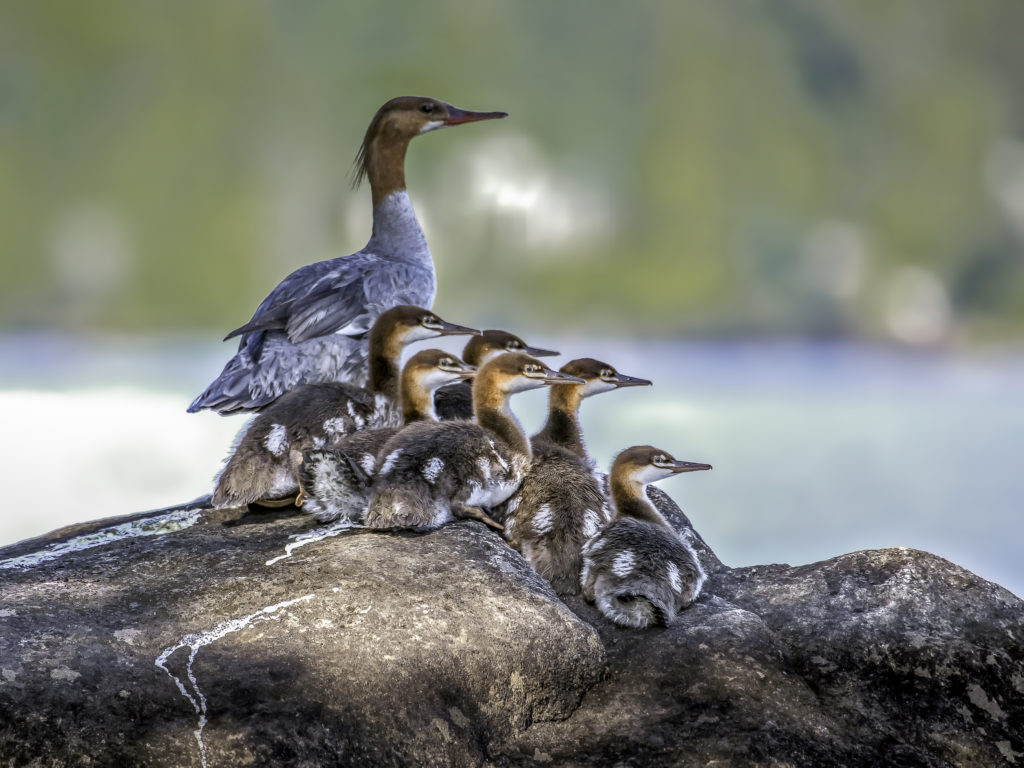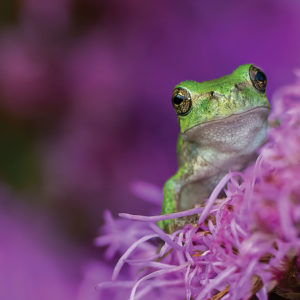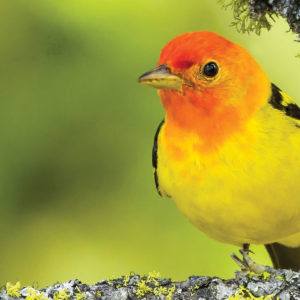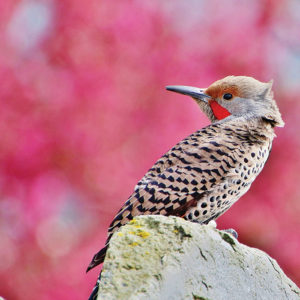Calendar Image: The Common Merganser
The Common Merganser (Mergus Merganser) is a species of duck native to North America, but also found in certain areas of Europe. Both sexes carry elegant features, although they have very different colouring. The females have a beautiful auburn crest on their heads, with a speckled gray and white body. The males on the other hand, have a creamy white body with hard black edges. The male’s head feathers are a deep forest green, and they’re slightly larger in size than the females. The Common Merganser is the largest of the duck species and a symbol of Canada’s natural beauty.

Chris St. Michael-Merganser family
They Grow Up So Fast
Also known as the Goosander, the Common Merganser will reach sexual maturity at two-years-old. These birds will lay anywhere from 6-12 eggs each spring. The mating couples will remain monogamous for potentially many seasons, but impressing a female in the first place takes a lot of effort. Males will quickly pass by females with their head feathers erected to catch their attention, and hopefully, their affection! The clutches of eggs they produce will hatch in about a month’s time— 28-35 days.
The males have no part in raising the ducklings, and even before the ducklings learn to fly, the mother has already moved on. The mother’s will show them the basic ways of hunting and swimming but, these ducklings are instinctively independent. Within 48 hours of hatching, the ducklings leave the nest and by eight-days old, they’re already skilled in aquatic diving.
Although their populations are in the millions in Canada (1-5 million), there are still threats to their livelihood. Ontario, Quebec, and some eastern areas are popular locations for the Common Merganser. But, these areas also attract hunters, threatening their well-being.
Sustainable Living
These ducks have a wide range of habitats and are found from the west coast of Canada, across Northern Europe, and even Asia. Generally, for mating, they congregate at fresh water basins, but during their migrations, the Common Merganser is known to visit oceans and seas as well. The Woodland areas are their preferred place to live. Making their nests in hollowed trees, on the ground near water, or even an abandoned Hawk’s nest.
Considered a keystone predator, the Common Merganser has been known to keep fish populations healthier in the waters they inhabit. What helps the Common Merganser stay at a level of least concern is that they have no known predators and are generally left alone. Evolution on their side, they’re a thriving species in Canada’s wilderness.



